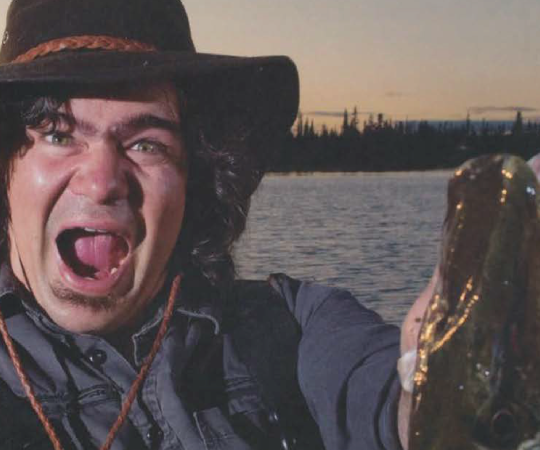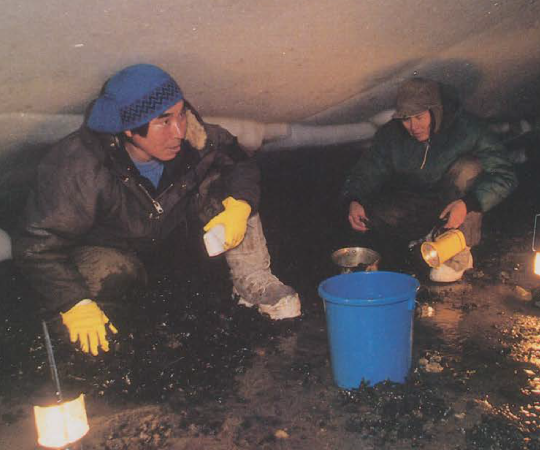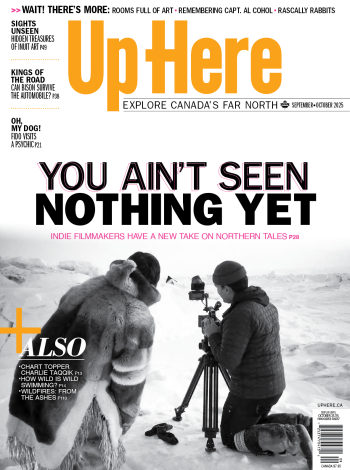Winnie Tarraq doesn’t remember the day artist Gabriel Gély stopped by to do a portrait of her little sister, Jane, back in 1964. In fact, she had never even seen the illustration until this year when our magazine published it on Facebook. The drawing shows the two-year-old Jane’s round cheeks surrounded by the fur-lined hood of her parka, her flat nose and her tiny pouting lips, with a chubby fist balled out in front of her. “My younger sister, she was beautiful when she was a baby,” says Winnie.
Done in Baker Lake sometime between 1963 and 1964, Jane’s portrait is one of a few yellowed sketches of Inuit children unearthed in an attic in the Netherlands by a couple of Up Here subscribers. The loyal readers shared the illustrations with us in hopes of identifying the children pictured.
Posting the drawings on social media attracted a lot of commentary and speculation on the models’ identities, but the only definitive subject we were able to track down was Jane, who sadly passed away a few years ago.
Winnie says she would have been four years old at the time Gély sketched her sister. She was likely outside playing or at school when the illustration was being done. Although her parents only spoke Inuktitut, she says it was normal to have English-speaking guests over. They couldn’t speak English, but they understood it perfectly.
“Pierre Trudeau came to our house once,” she recalls. “I used to sit on his lap when he came over for bannock and tea.”
The two sisters didn’t play together much as young children, but that’s because Jane was always off with her male cousins—until they found out she was a girl.
“They thought she was a boy growing up until they went skinny dipping… so they didn’t want to hang out with her anymore,” says Winnie, adding that Jane had never corrected her cousins prior to the incident. “She enjoyed hanging out with the boys.”
The sisters did spend more time together as teenagers, even taking a student exchange to Toronto together. Jane was about 16 or 17 at the time and always loved seeing new places, says Winnie. But while Winnie spent years living in various provinces, Jane ended up staying in Nunavut after her father passed away, to take care of their mother.
“She was very giving, very kind and quiet,” Winnie remembers. “Most of the time she was quiet, but when she was having a good day, she was funny.”
The artist, Gély, was a well-known painter and photographer in the North whose images recorded a way of life now largely gone. He first moved to Nunavut from Paris during the 1950s and worked as a cook, but also often captured images of the communities he visited and the people who lived there.
Gély passed away in November of last year, but the hundreds of illustrations he made depicting his life in the North from the 1950s to the ’80s have been bequeathed to the University of Manitoba. Some of his charcoal drawings can also be found online, including a print of Jane’s portrait, which recently went up for auction.
While it’s great to see a piece of history unearthed, these images are just a few of many photographs and illustrations of Inuit and Indigenous Northerners that remain unnamed, turning up in odd attics and old basements. There is a growing desire to identify these people as a way of understanding their story and how these images came to be. For outsiders, these portraits offer a sketch of an Inuit child. But for the families of those pictured, it’s a window into the past, and where their roots began.









